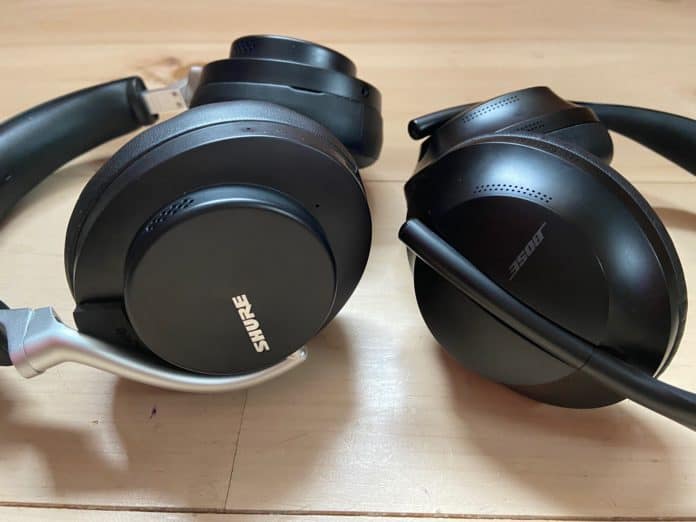Yesterday, I reviewed one of Shure’s latest creations, the Aonic 50. I was quite impressed. The Aonic 50 seems to beat some tough competition. But I was curious to see how it would stack up against the equally priced Bose Noise Cancelling 700, as it’s arguably the leader in noise-cancelling technology. How does the Aonic 50 compare in terms of ANC effectiveness? And what are the similarities and differences in sound? Of course, much has already been written about both headphones, and you can read some MajorHifi’s reviews of both, the Bose and Shure models here. However, the following review is for folks who are already familiar with one of these headphones but need a solid comparison before pulling the trigger. Which headphone will work for you? Let’s take a look in this Shure Aonic 50 vs Bose Noise Cancelling Headphones 700 Review.
Shure Aonic 50 vs Bose Noise Cancelling Headphones 700 Review
FIT
I found both headphones comfortable to wear for long stretches. But in terms of luxury, the Aonic 50 seems to be the winner; the ear pads are thicker, wider and ventilated on the inside. And I would say that if your ears are on the larger side, the Aonic 50 is a safer bet. The headband is also a lot more opulent in its design. However, this advantage comes at a cost if portability is a factor in your purchasing decision.
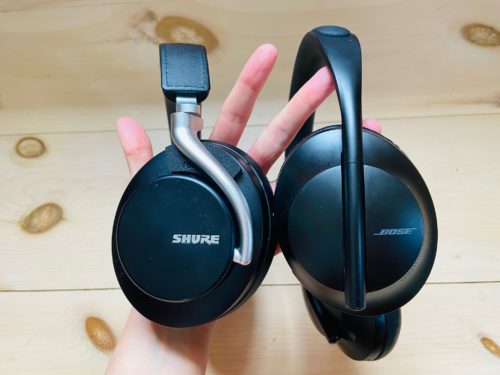
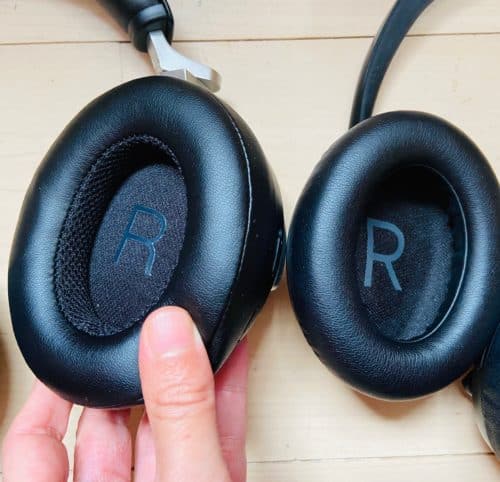
Given that the ear pads on the Aonic 50 are pudgier than my baby’s thighs, I was sure that it would provide a more pleasing fit. But the Bose’s shallower ear pads don’t make them any less comfortable to wear. In fact, they feel softer on the head than the Aonic 50. But if you like your headphones to be more snug and secure, the Aonic 50 should be your pick. The clamping force is slightly firmer, and it has a solidity in feel that the Bose 700 can’t match. Furthermore, given the size difference, one would think that the Aonic 50 is a much heavier headphone. But holding them both in my hands, the difference in weight feels marginal.

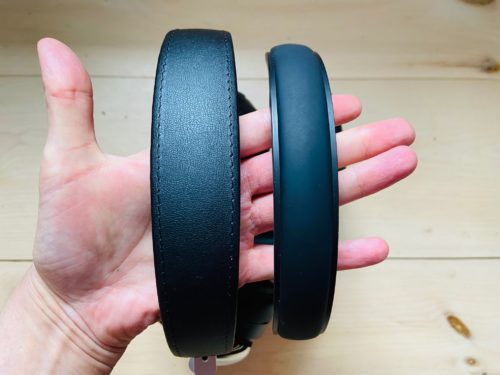
DESIGN
Active Noise-Cancellation
It’s probably unsurprising that the Bose Noise Cancelling 700 Headphones win in this department. The difference isn’t too significant, but it’s still noticeable. For example, I could hear my fingers tapping on the desk while wearing the Aonic 50. But with the Bose 700, the sound was almost muted altogether. That being said, some folks find that, at its maximum strength, ANC can cause a feeling of pressure against the eardrum. Perhaps for this reason, Bose has provided the flexibility of changing the ANC strength. Shure has done the same, but the Bose 700 offers 10 ANC levels, while the Aonic 50 only offers 2. Both headphones also provide an “environment” mode, which invites in the sound of your surroundings.
Functionality
The Bose 700 uses a combination of buttons and touch controls, while Shure has gone with all buttons. Personally, I much prefer button controls. They are easier to navigate with your fingers, and I also find them more reliable and responsive than touch controls in general. But to each his own.
In terms of functionality, you can expect about the same from each of the headphone’s controls; play/pause, track skipping, volume, calls, and voice assistant activation. Both headphones also provide buttons that allow you to switch between ANC modes. However, Bose has thrown in an added feature or two, such as the ability to mute your voice on a call.
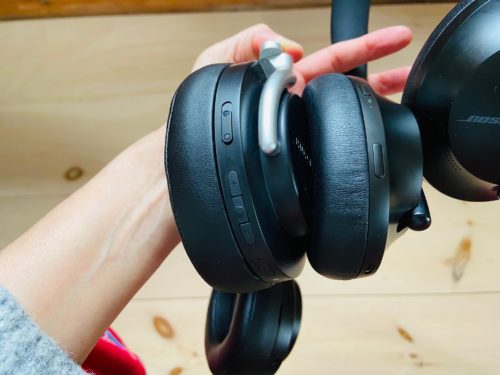
Battery Life
Both headphones perform equally well in this category, providing around 20 hours of charge.
Call Clarity
Both headphones deliver fantastic call clarity. That being said, the Bose 700 wins by a small margin in this department. The call clarity on my end sounded equally good on both headphones. But the caller on the other end of the line found the Bose 700 to be clearer sounding. So, the 700’s microphone may be slightly superior to that of the Aonic 50.
Accompanying Apps
Both headphones have accompanying apps that give you extra control over your headphone settings. The Bose app, for example, allows you to switch between the 10 different ANC levels. (The button on the headphones only lets you switch between 3 ANC settings). However, the Aonic 50 has the slight upper hand in this category, as it provides advanced equalizer settings that give you creative control over your sound. Based on my navigation of the Bose Music app, the 700 does not provide an equalizer, which is surprising given how valuable of a tool it is. (If any of our readers do find equalizer capability, please write in and let us know).
Bose also boasts its “AR” technology. In theory, it’s a technology that allows you to use your headphones with your surrounding environment with the download of compatible apps. There are navigation apps, for example, that can be synced up to your headphones. And the app responds to direction you are facing. However, in practice, this technology is still in its developing phase, and I found the AR apps a little unreliable. But it’s an interesting feature that could prove useful in the near future.
Portability
I’ll let the pictures speak for themselves. (Both headphones only fold flat).
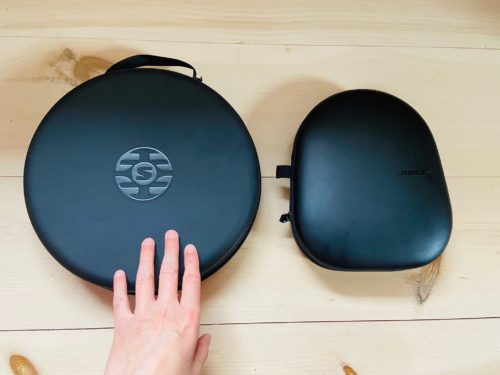

SOUND
Low Frequencies
Listening to pop and rock, the 700 will give you a little more bass oomph, fatness and warmth than the Aonic 50. That being said, since the Aonic 50 comes with an equalizer, this bass profile can be adjusted. But at its default setting, the Aonic 50 just a little thinner and perhaps more natural in its presentation than the juicer low end of the 700.
Middle Frequencies
With respect to balance in this range, these headphones are relatively similar. That is, female vocals, especially, have a touch of added presence in the mix. Still, the Aonic 50 reveals a bit more of the lower midrange, while on the 700, there’s more of an emphasis on the upper mids. As a result, tracks with heavy instrumentation sound a little more expansive and all-encompassing on the Aonic 50. In comparison, the 700 offers a slightly more dynamic feel, where the contrast between the low-end and the higher frequencies is a tad more pronounced.
In terms of detail, both headphones are solid performers. However, especially when listening to classical and acoustic instruments, it becomes apparent that the Aonic 50 sounds more natural or realistic. The resolution on the Aonic 50 is just superior, as it brings out subtleties in timbre and tone that are less apparent on the 700. And if you prioritize a super clean sound, you’ll probably gravitate towards the Aonic 50 as well.
High Frequencies
The high frequencies are a little snappier and more crystalized on the Aonic 50 than they are on the 700. So, percussion instruments in this range, for example, have a little added crispness on the Aonic 50. And again the Aonic 50 conveys a cleaner feel in this range as well. The same is true for female vocals in the high frequencies. Any voice in the soprano range feels lighter, airier and more nuanced on the Aonic 50 than it does on the comparatively sluggish 700.
Soundstage
The Shure Aonic 50 proves to have the upper hand in this category as well. The soundstage is more expansive and offers a slightly better sense of dimension than the more insulated feel of the Bose 700.
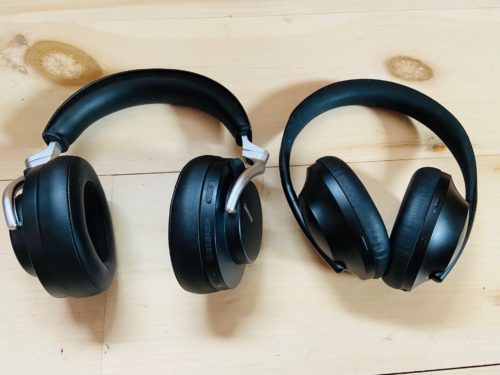
PROS and CONS
Shure Aonic 50
Pros: Fantastic resolution, big soundstage, equalizer control, luxurious feel.
Cons: Not the most portable.
Bose Noise Cancelling Headphones 700
Pros: Great active noise-cancelling technology.
Cons: No advanced equalizer, touch controls can be a pain. (e.g. Easy to inadvertently activate voice assistant).
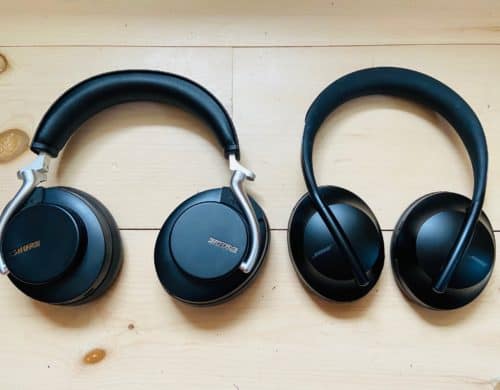
SUMMARY
Both headphones win with respect to what they do best. It’s hard to beat Bose’s noise-cancelling technology. At the same time, The Aonic 50’s sheer skill in terms of sound is just too good for Bose to compete with. But in almost every other respect, it’s a hard one to call. Both deliver great call clarity, and both have an equally long battery life. However, if portability is big concern, then the Bose 700 should be your pick. On the other hand, if you’re hungry for the most luxurious experience in terms of build and sound resolution, the Aonic 50 is your best bet.
You can find both of these headphones for the best price here:
Shure Aonic 50 on Amazon
Bose Noise-Cancelling Headphones 700 on Amazon
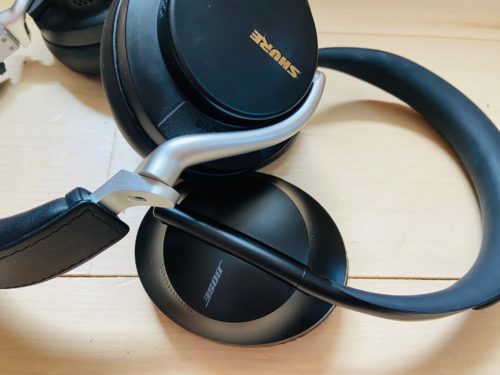
SPECS
|
Bose Noise Cancelling Headphones 700 |
Shure Aonic 50 |
|
| Battery Life | 20 hours | 20 hours |
| Codecs | AAC, SBC | AAC, LDAC, SBC, aptX, aptX HD, aptX LL |
| USB Type | USB-C | USB-C |
| Weight | 0.56 pounds | 0.7 Pounds |
MajorHifi may receive commission through retail offers.
Compare the ranking of various headphones, earbuds and in-ear monitors using our tools.
Discuss this, and much more, over on our forum.
---MAJORHIFI may receive commissions from retail offers.


